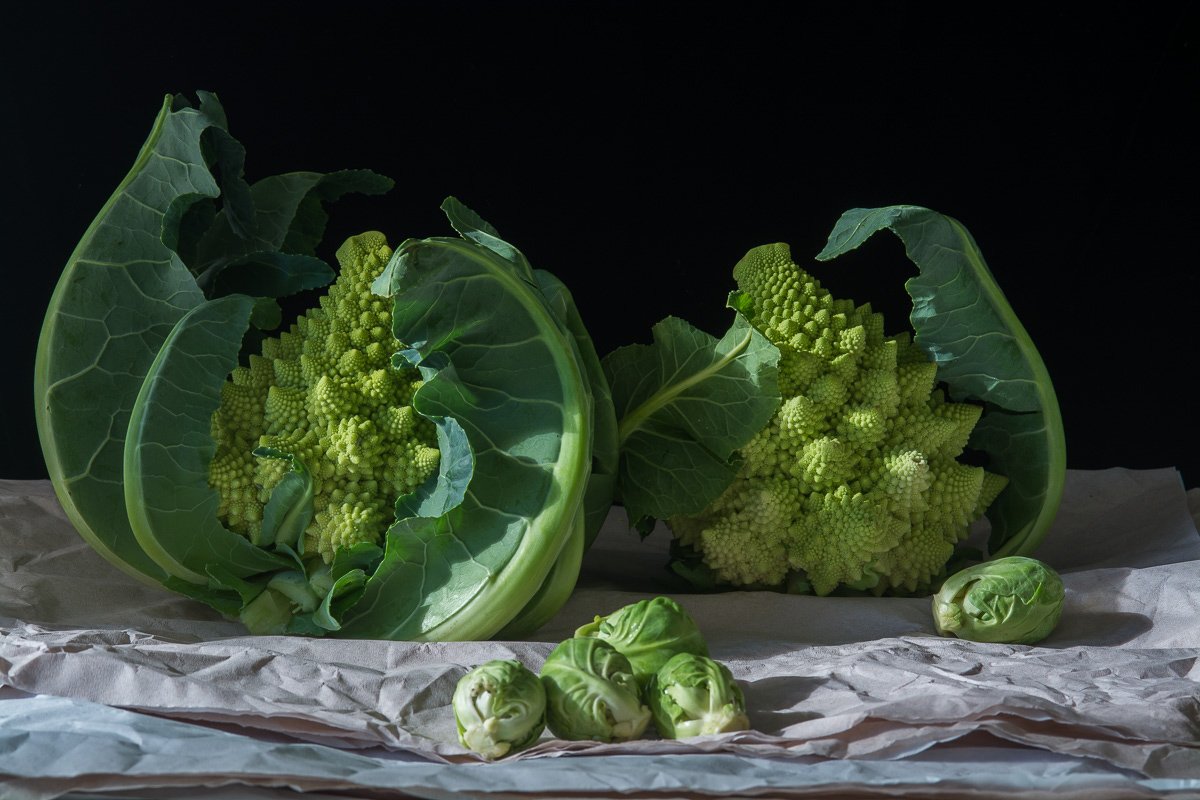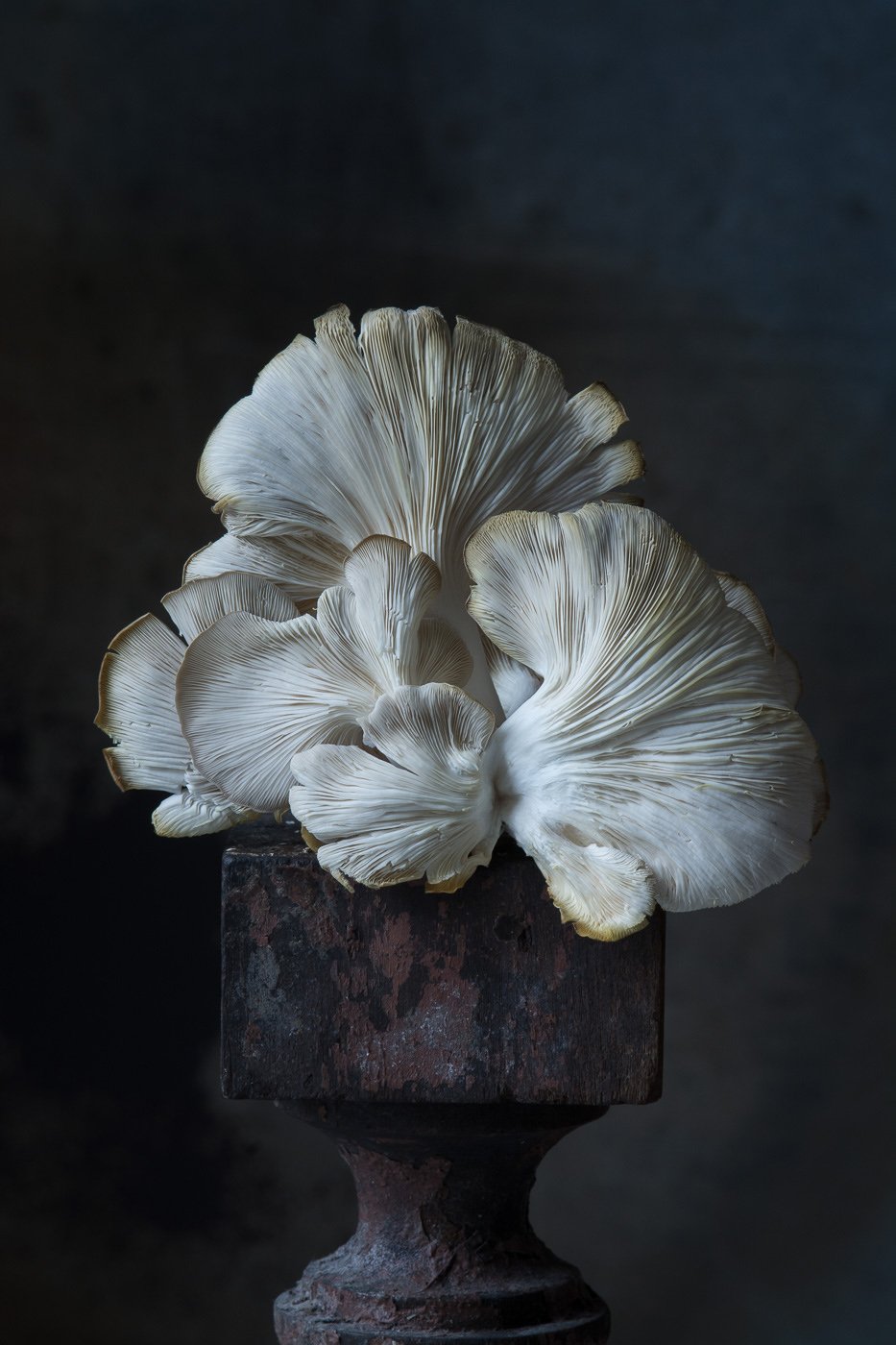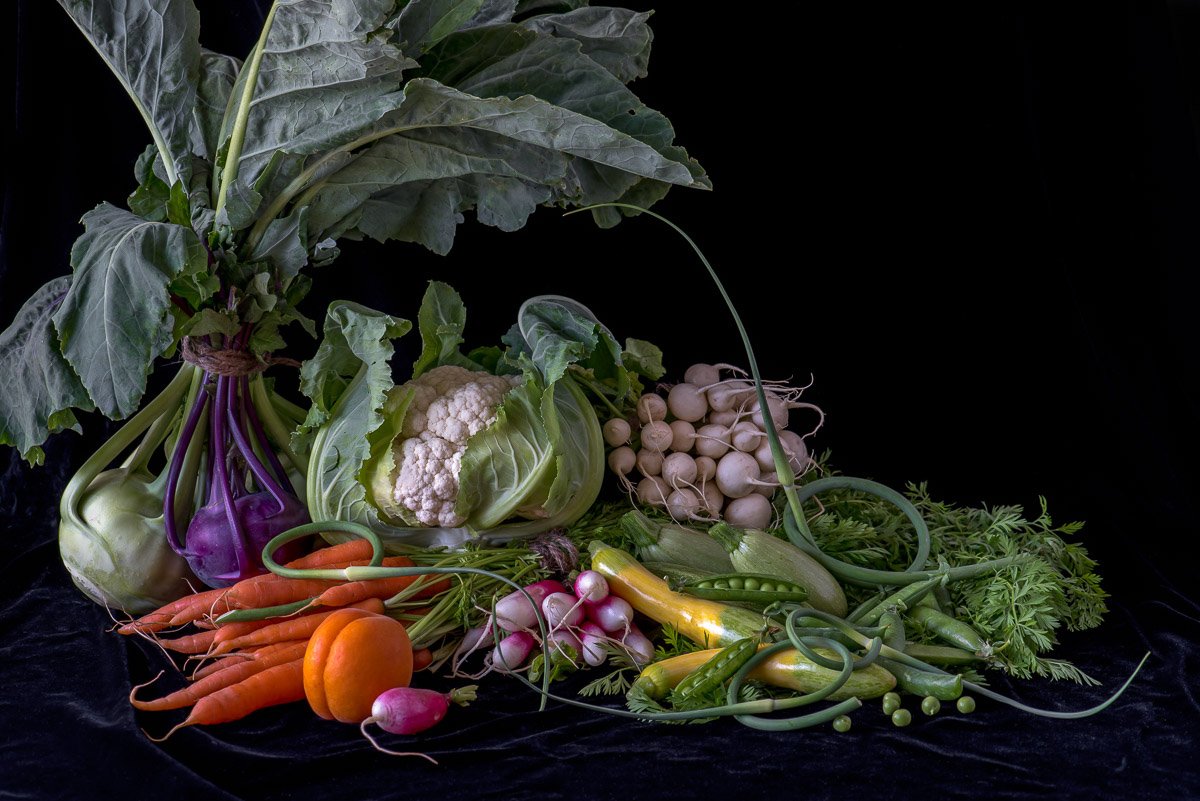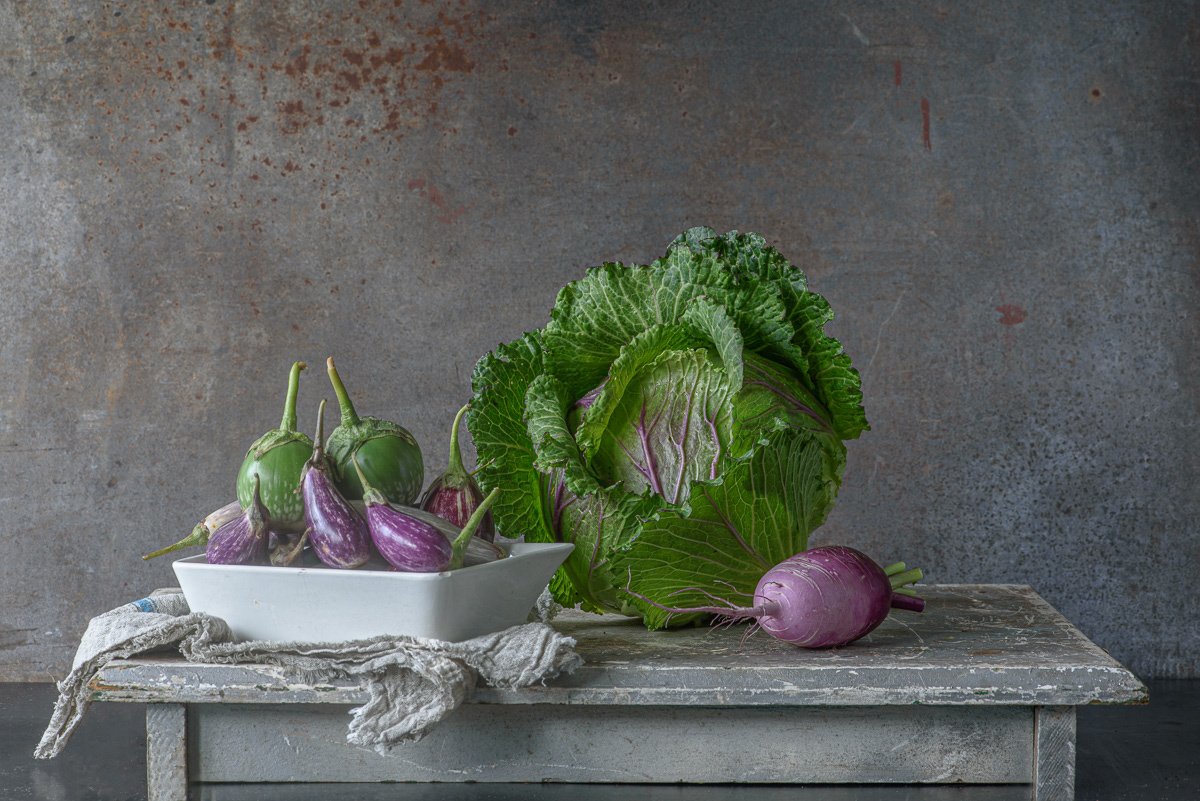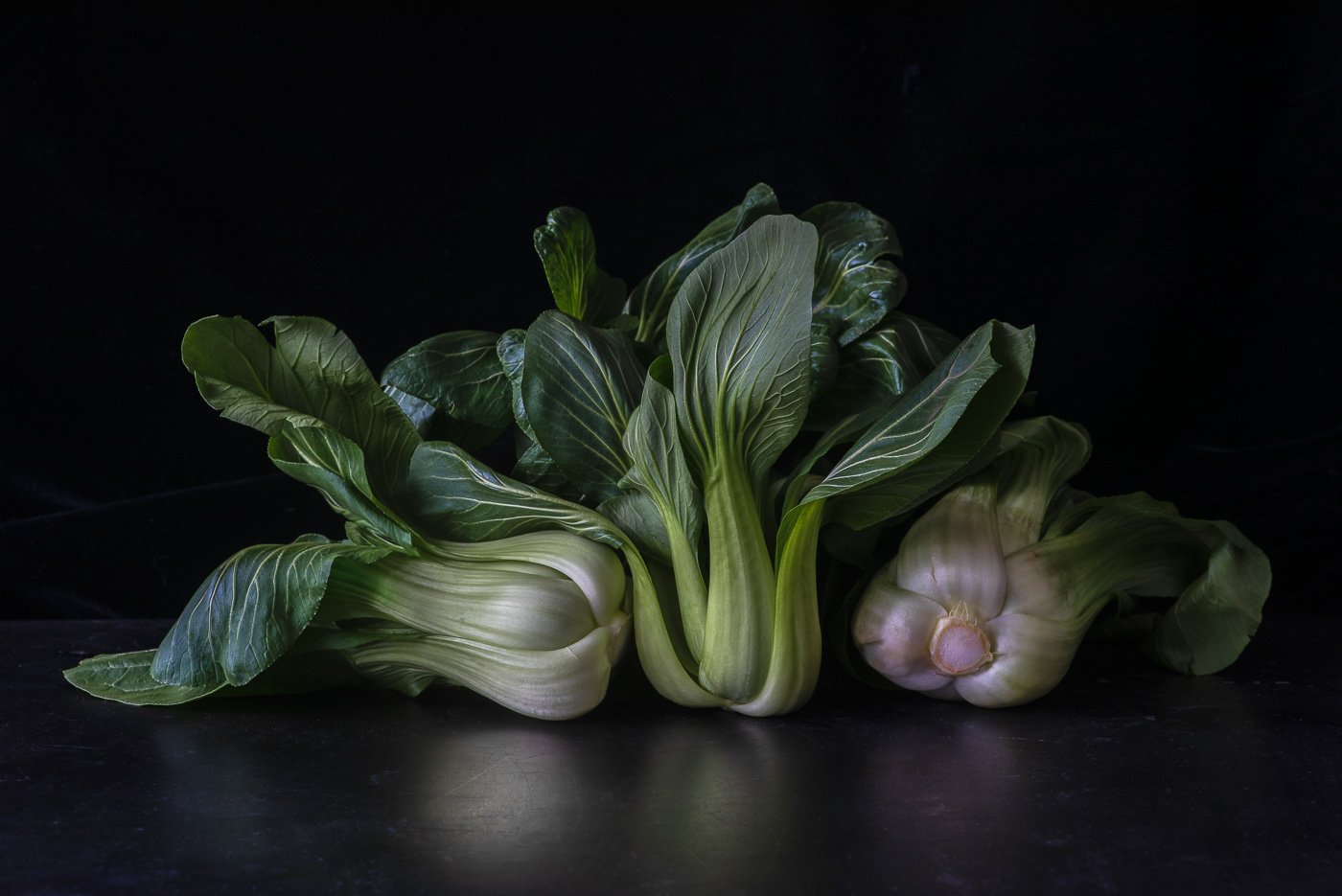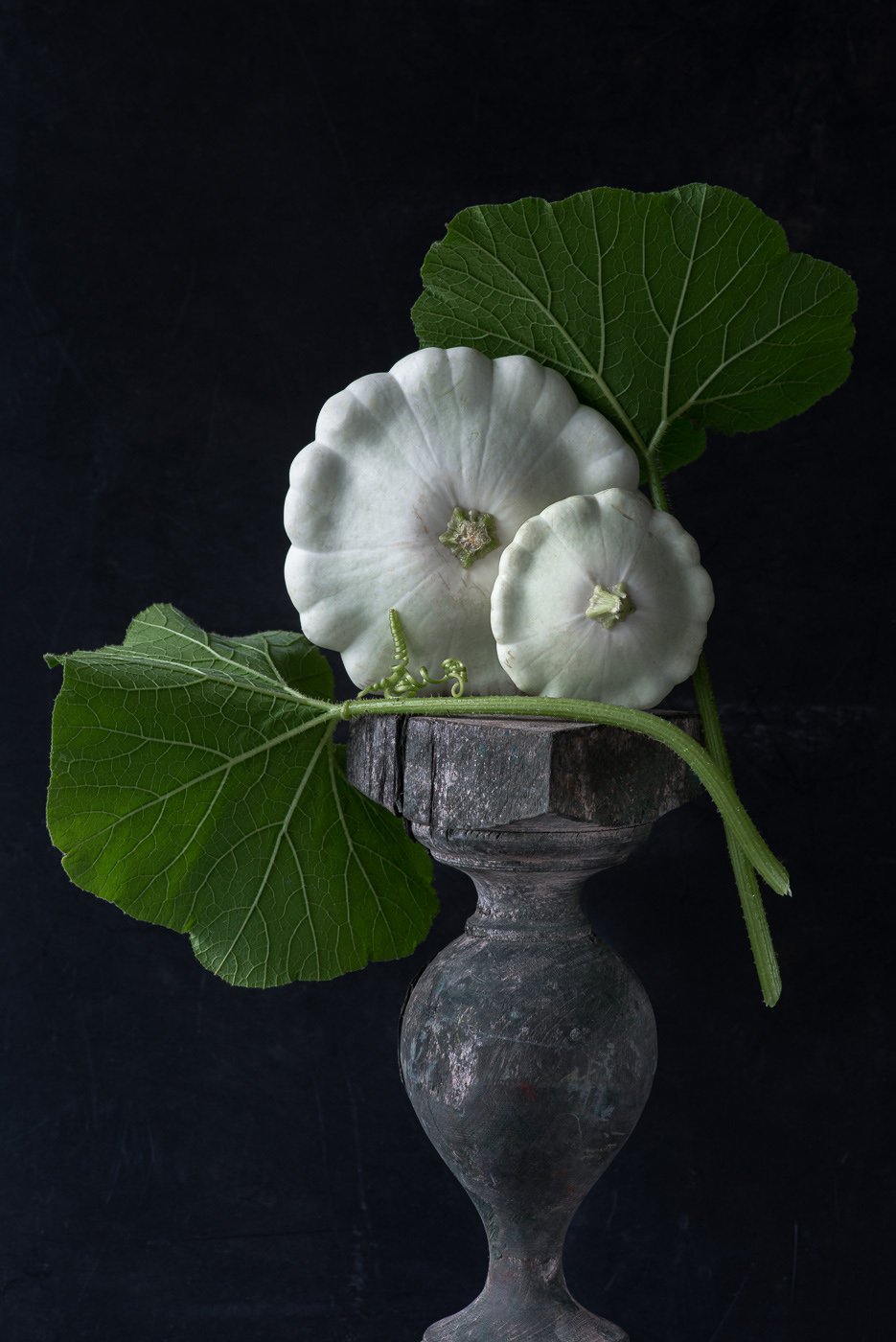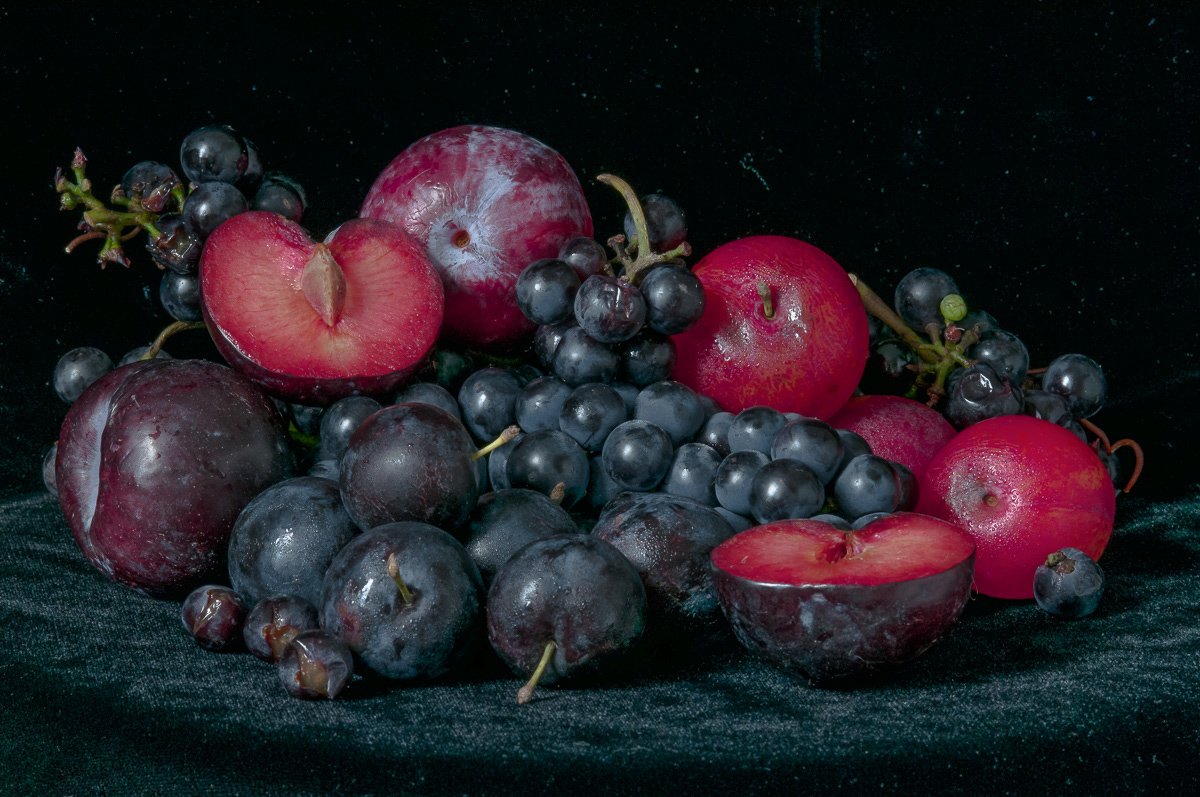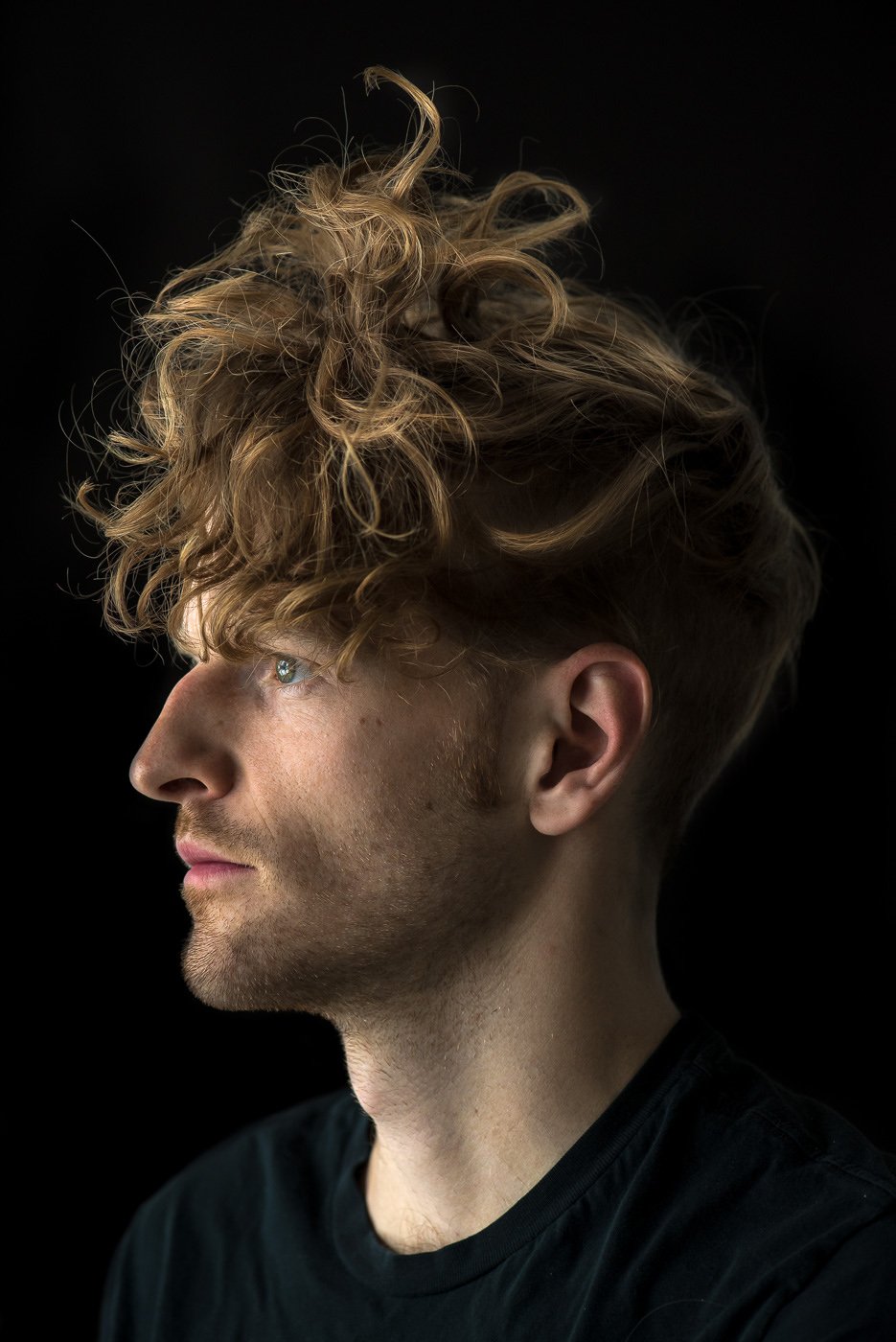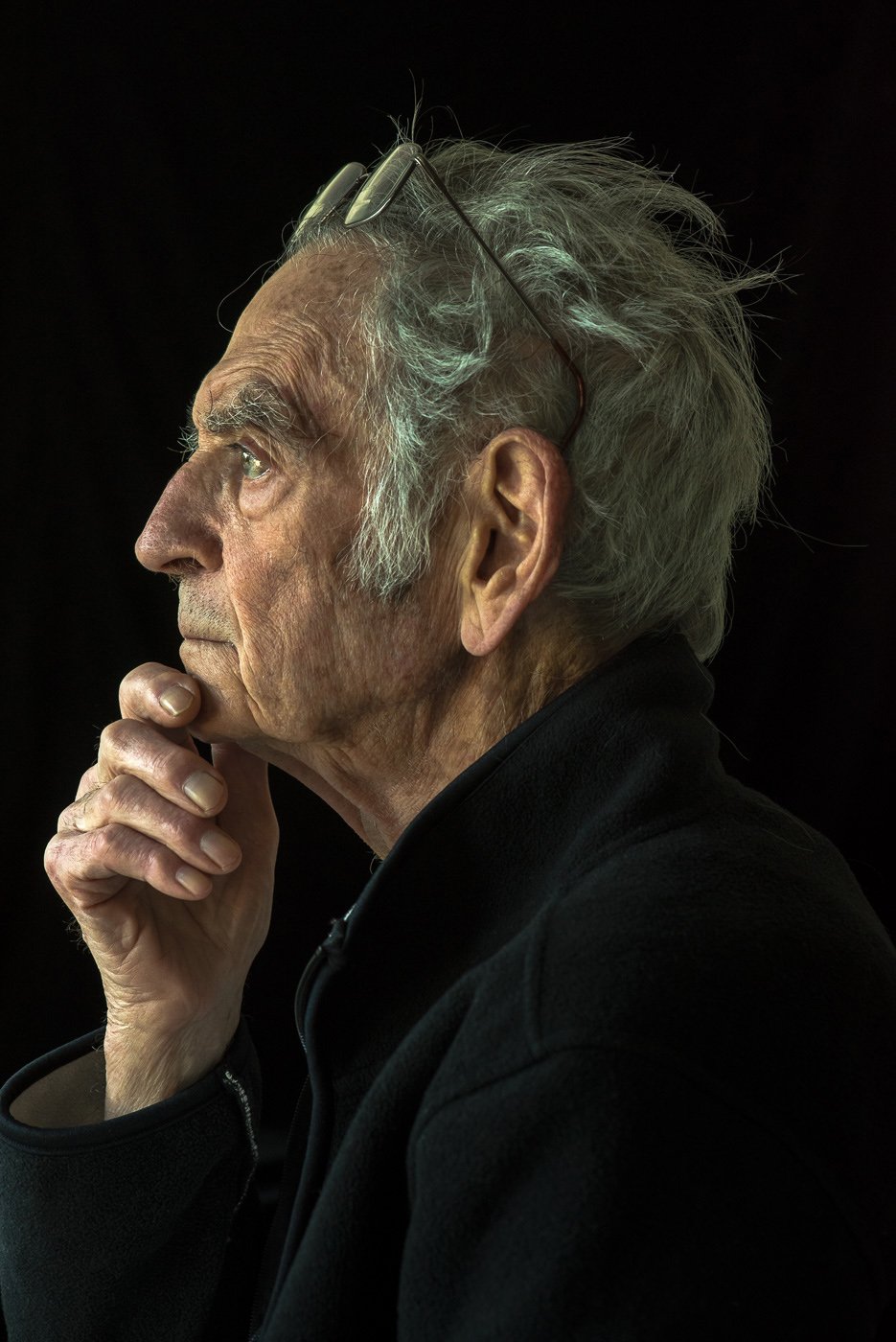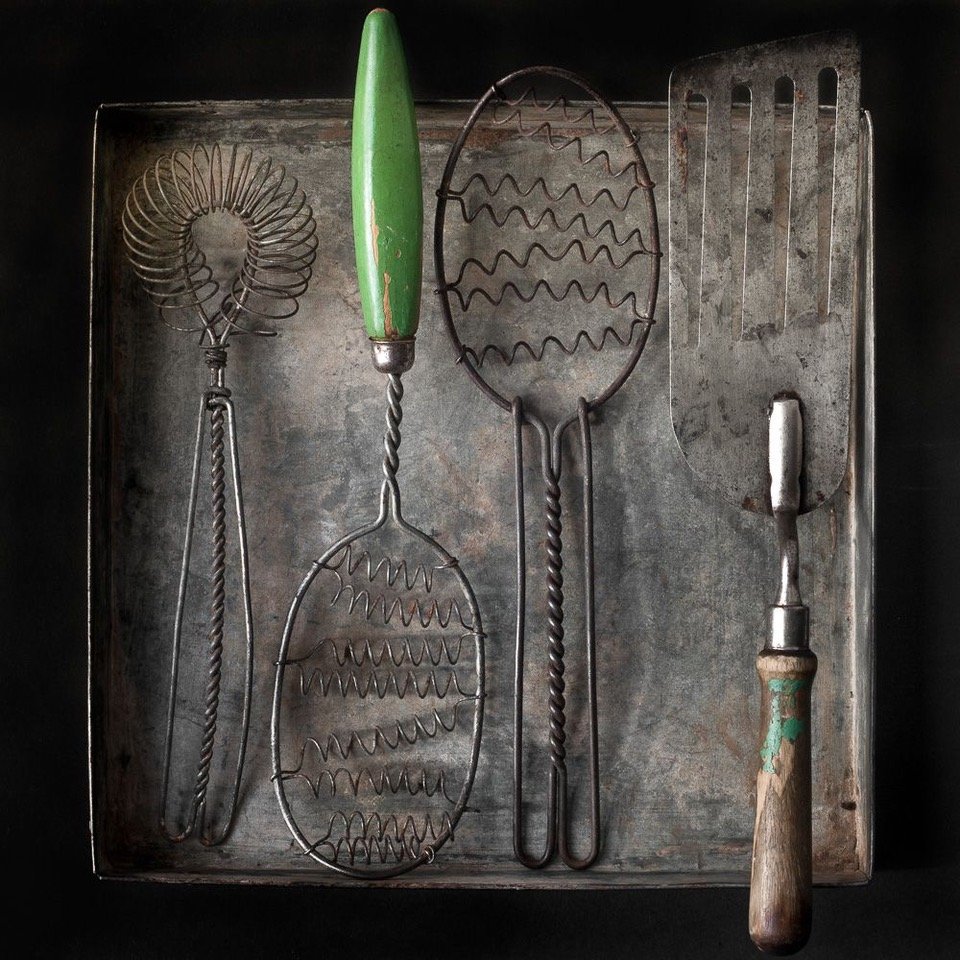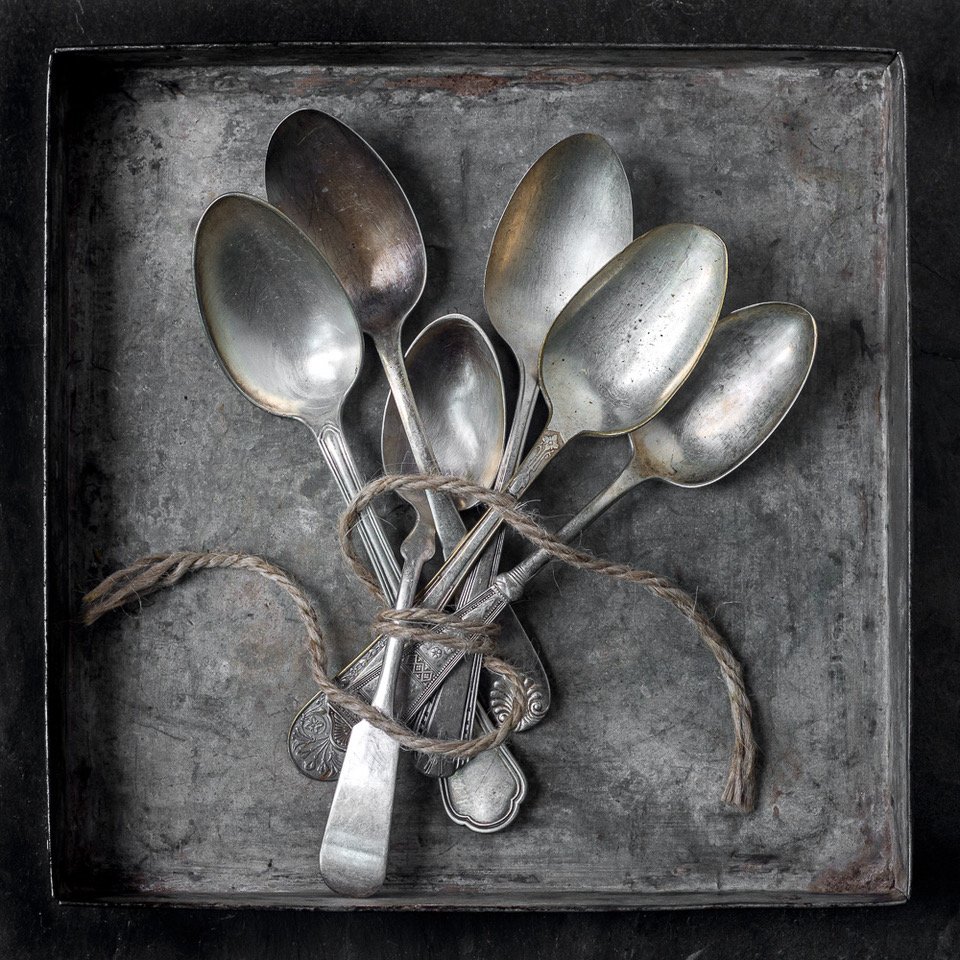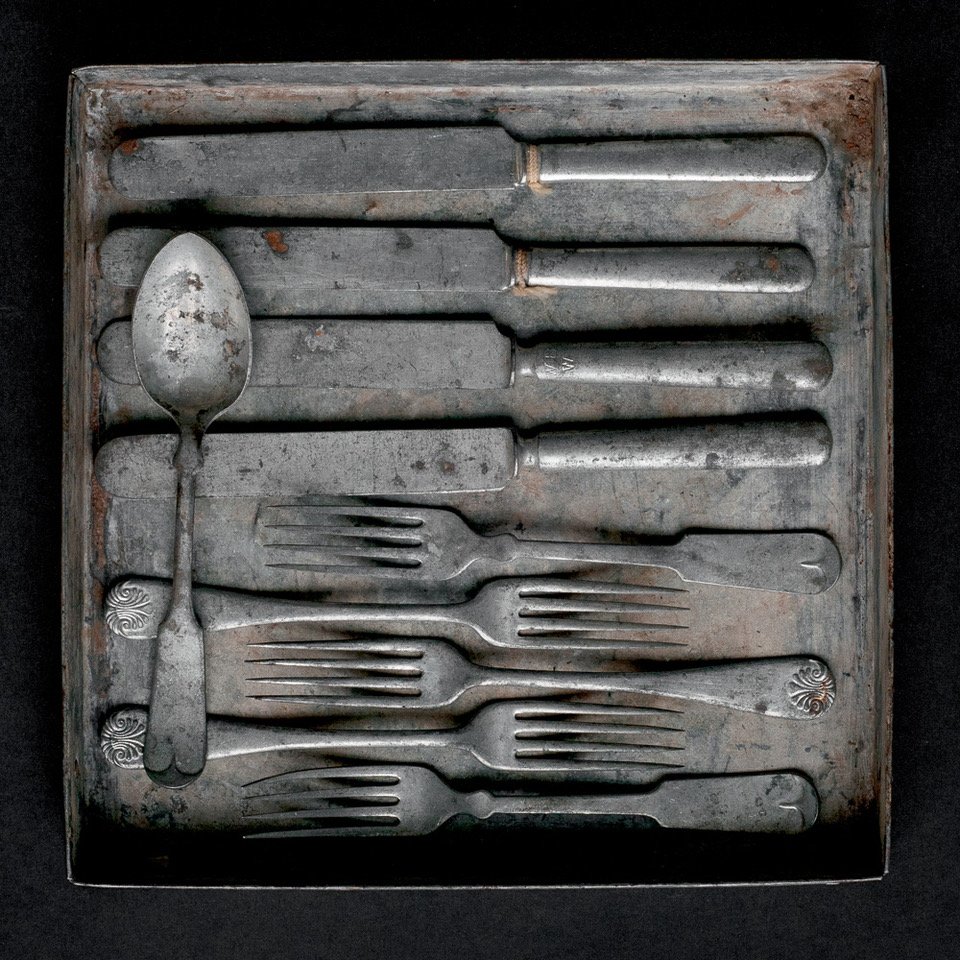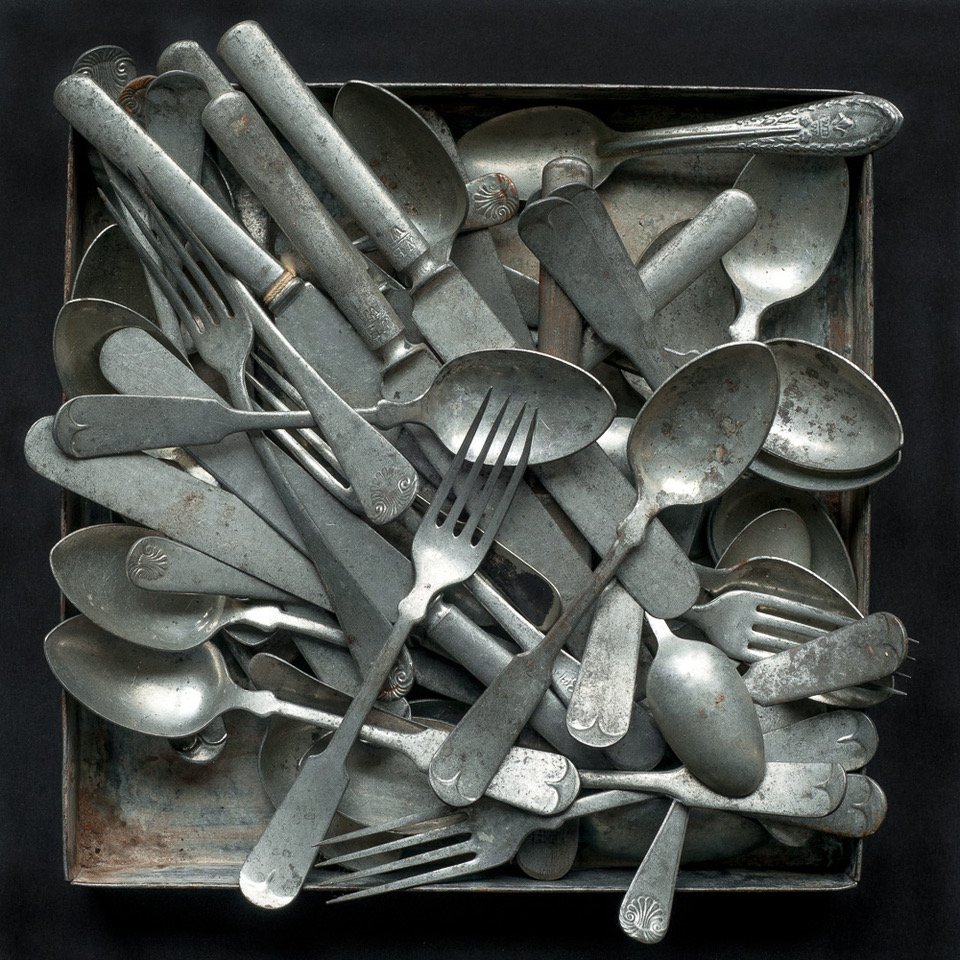Lynn Karlin
Portrait photographer of vegetables, fruit, flowers and humans, Lynn Karlin lives on the coast of Maine. A graduate of Pratt Institute in Brooklyn, New York, she has an impressive list of employees and clients over her five-decade career. Sole photographer of three award winning garden/lifestyle books, Lynn's work has appeared in numerous write-ups from the San Francisco Chronicle to The New York Times and is exhibited in fine art galleries and corporate and private collections worldwide.
Lynn Karlin, Radishes & Onions, The Still Life Series, 2021, Inkjet print, 15 in. x 15 in.
Jan Pieter interviews Lynn Karlin
J.P: In a lot of photography the “Decisive Moment” is a determining factor in the creative process. But looking at your work I detect a scrupulously thought out idea and set up. The majority of effort and time to create your photographs seems to be in the planning of the piece. The still lifes you create are designed well before the shutter of the camera is pressed. The result in your still lifes often evokes the feeling we find in a 17th century Dutch painting. Could you elaborate on your process?
Lynn: The “Decisive Moment” conceptualized by photographer Henri Cartier-Bresson does not apply to my still lifes; I would say still lifes in general. My arrangements of vegetables, fruit and flowers are either pre-conceived while “scouting” produce at my local farmers market or in my studio as I begin the process of styling them. Some days they fall right in place, other days I labor over them and it could be a couple of days before I am pleased with the results. I strive for beautiful, seductive, thought provoking, or even humorous images. I am drawn to the 15th – 17th century master painters for the directional quality of the natural light; the chiaroscuro (chiaro, “light” and scuro, “dark”) and the juxtaposition of their subject matter. My favorite artists from the Netherlands and Spain are Adriaen Coorte, Francisco de Zurbarán, Willem Claesz. Heda and Clara Peeters, the first lady of Dutch still lifes. I get so inspired from their brilliance and so excited that working in this genre has kept me motivated for fourteen years now. There are endless possibilities. I tend to put more of a modern take on my arrangements and although some of my work looks painterly, other have a soft, less contrasty feel which I like as well.
J.P.: Towards the end of the nineteenth century there were two photographers that come to mind who did some incredible work with material from the natural world. The first one was the British gardener/photographer Charles Jones. He photographed vegetables, fruits and flowers in a scrupulous manner while he mostly concentrated on the subject matter itself using neutral backgrounds. His subject matter however, was beautifully arranged, he did not shoot it in nature itself. The other photographer from the same time period was German photographer Karl Blossfeldt, his work is as elegant as that of Jones although he photographs his work much more in close-up. All the work I have seen by you is in color but I automatically started to draw comparisons with these two photographers. Are you familiar with the work I mentioned and if so, did it influence you at all? In case you would not be familiar with the mentioned photographers, what has influenced your work most?
Lynn: The simply arranged and directness of Charles Jones’ photographs were what motivated and inspired me to move from garden photography, which I photographed for magazines for thirty years, to fine art still life in 2008. He was most instrumental to my work and his passion for photographing vegetables, flowers and fruit turned into my passion as well. Jones grew his own produce and I also farmed for 8 years, when first moving to Maine from Manhattan in 1983, which gave me an appreciation for the seasons and the beauty of the harvest. Twice a week I delivered produce from our farm to inns and restaurants in the area. Where Jones used neutral backgrounds to document his harvest, with very simple compositions, often using repetitive patterns, I placed my vegetables on pedestals against a black backdrop, shot in color and called my collection The Pedestal Series. Later came The Tray Series where I arranged plants and kitchen objects in a small square metal tray offering an aerial view into a confined space, often exiting the frame to break up the design. Thinking within the box, I look for good form, texture, patina and color. The Still Life Series is the most recent and is shot in a horizontal format on a tabletop. What I admire about Charles Jones was that his body of work was done purely for his own pleasure, never exhibiting them in public. It was only after his death that this prolific body of work was discovered in a box at a London antique market. A similar approach, but more architectural in design, are the wonderful images of plant life by famed photographer Karl Blossfeldt who sparked my vision. My photography is a result of my admiration for and inspiration from these two photographers.
J.P: A few years ago you participated in the “Contemporary Portraiture” exhibit we had at the Museum of Photographic Arts. You showed some stunning portraits, all in profile, which is rather unorthodox. Looking at your portraits I do get a sense I get to know your subjects well in spite of the lack of eye contact. Usually, the portrait photographer connects through eye contact with the subject. I assume you were not able to do this so how do you connect with your subject during the taking of the shot?
Lynn: Yes, profiles are a twist on the portrait. The topography of a human face in profile fascinates and challenges me. Each profile is an adventure in discovery as I set out to capture the moment when my subject’s inner self emerges, direct and stunning, in side view. They illuminate a person’s strengths, courage, and vulnerabilities. I choose my subjects for their distinctive, distinguishing features. Rarely do we see others (or ourselves) in profile. The reaction of my subjects when seeing their profiles is enlightening. There is no direct connection with my subjects when I am photographing them. Routinely I greet the person at my studio, explain what I am looking for and share the images with them as I shoot. Most of the time, I have only met them briefly before that day. I discover my subjects at local venues and through friends. The absence of eye-to-eye contact leaves the sitter’s mind free to wander while staying very still in one position, unlike a frontal view which might be more animated and stressful for the subject.
J.P: Your portrait series is called: “Still Lives, Stories in Profile”. How do you see a Portrait as Still Life?
Lynn: This series of Still Lives differ from my art Still Lifes which depict non-living objects. My human subjects are very much alive but are “still” for just a brief moment – for just as long as it takes me to capture their image using a slow exposure. For that 1/15 of a second their breathing stops, they remain very focused until they can relax once again. Each profile reflects the uniquely accumulated experiences of an individual’s life when a personality and a story emerge in its simplest form. One young man who sat for me commented, “I feel like one of your vegetables.”
Lynn Karlin, Juliana, Still Lives: Stories in Profile, 2018, Inkjet print, 24 in. x 16 in.
Lynn Karlin, Tom, Paul and Dimitri, From the Still Lives: Stories in Profile, 2017, Inkjet prints, 24 x 16 inches
works by Karlin in our current exhibition
Lynn Karlin, Spatula and Whisks, 2015, Dye Sublimation on aluminum, 36 x 36 inches, $4,500.
Lynn Karlin, Spatulas, Flatware#2 and Spoons and twine in tray, 2015-2016, Archival pigment prints, 15 x 15 inches, Prints $600. each
My fascination with kitchenalia started as a child, first playing with the objects as toys and then cooking alongside my mother, especially at holidays, learning that each tool had a specific purpose. Through my adult years I’ve collected vintage flatware and cooking gadgets from yard sales and antique shops; my favorite being the three blade spatula from the 30’s and the clever Easy Flip spatula. Arranging these objects in a tray and photographing them from above using natural light in my studio led to The Tray Series which challenges me to create within a confined space accentuating their form, texture and design. - Lynn Karlin


